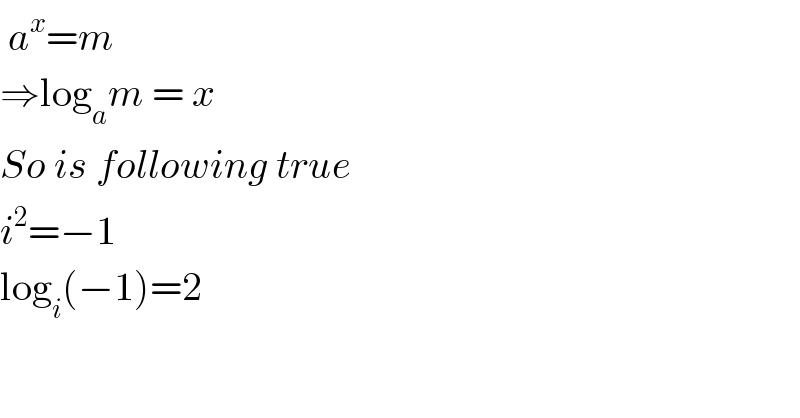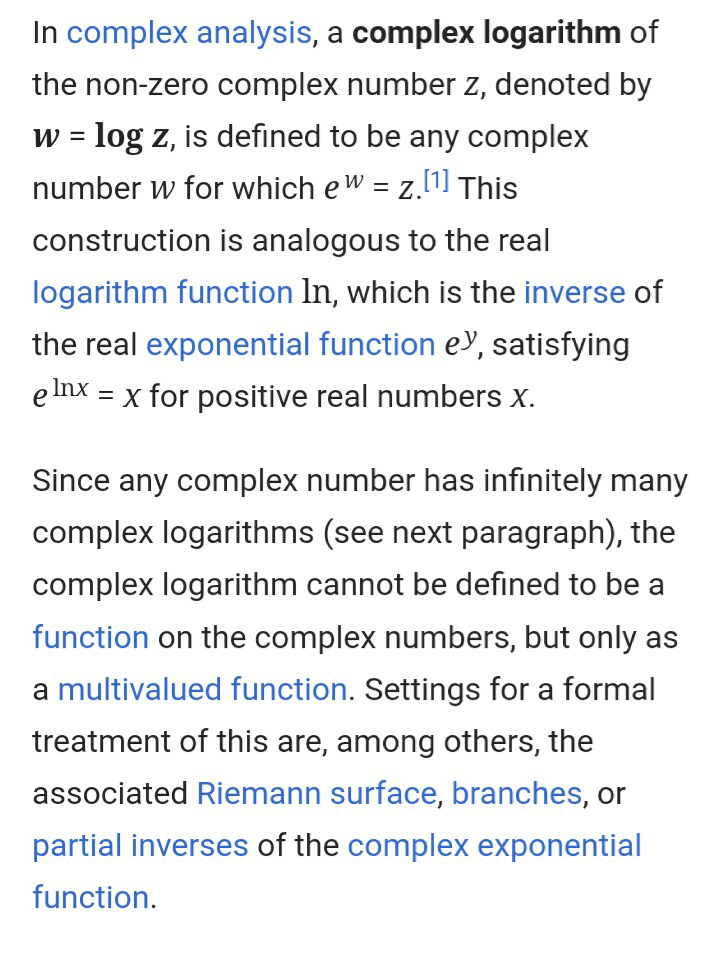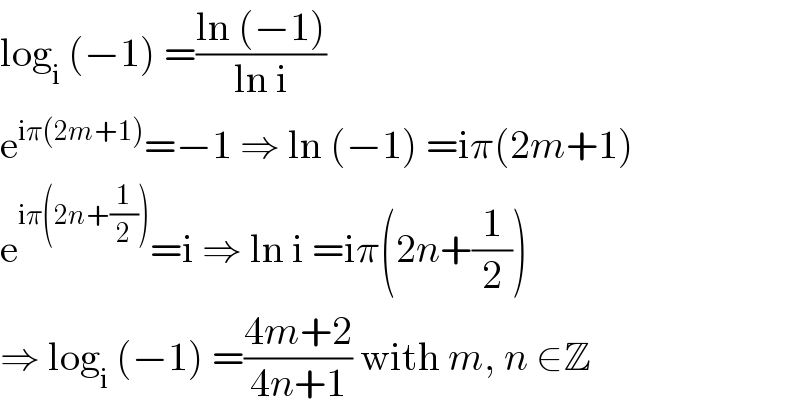Question Number 58076 by Kunal12588 last updated on 17/Apr/19

$$\:{a}^{{x}} ={m} \\ $$$$\Rightarrow\mathrm{log}_{{a}} {m}\:=\:{x} \\ $$$${So}\:{is}\:{following}\:{true} \\ $$$${i}^{\mathrm{2}} =−\mathrm{1} \\ $$$$\mathrm{log}_{{i}} \left(−\mathrm{1}\right)=\mathrm{2}\: \\ $$
Commented by $@ty@m last updated on 17/Apr/19

$$\mathrm{log}_{{a}} {m}\:=\:{x}\:{is}\:{defined}\:{only} \\ $$$${for}\:{a}\left(\neq\mathrm{1}\right)\in\mathbb{R}\: \\ $$
Answered by $@ty@m last updated on 17/Apr/19

Answered by MJS last updated on 17/Apr/19

$$\mathrm{log}_{\mathrm{i}} \:\left(−\mathrm{1}\right)\:=\frac{\mathrm{ln}\:\left(−\mathrm{1}\right)}{\mathrm{ln}\:\mathrm{i}} \\ $$$$\mathrm{e}^{\mathrm{i}\pi\left(\mathrm{2}{m}+\mathrm{1}\right)} =−\mathrm{1}\:\Rightarrow\:\mathrm{ln}\:\left(−\mathrm{1}\right)\:=\mathrm{i}\pi\left(\mathrm{2}{m}+\mathrm{1}\right) \\ $$$$\mathrm{e}^{\mathrm{i}\pi\left(\mathrm{2}{n}+\frac{\mathrm{1}}{\mathrm{2}}\right)} =\mathrm{i}\:\Rightarrow\:\mathrm{ln}\:\mathrm{i}\:=\mathrm{i}\pi\left(\mathrm{2}{n}+\frac{\mathrm{1}}{\mathrm{2}}\right) \\ $$$$\Rightarrow\:\mathrm{log}_{\mathrm{i}} \:\left(−\mathrm{1}\right)\:=\frac{\mathrm{4}{m}+\mathrm{2}}{\mathrm{4}{n}+\mathrm{1}}\:\mathrm{with}\:{m},\:{n}\:\in\mathbb{Z} \\ $$
